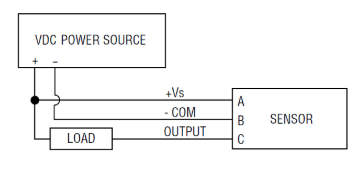What is a sourcing output? In a sourcing configuration, the sensor is the source of the current required to power the load. Current supplied by the sensor passes through the load second and then to ground. A sensor with a sourcing output switches the positive leg of the circuit. With a sourcing sensor, your input voltage powers the load.
Do I want a sourcing output for my sensor?
If you want to see the supplied voltage as well as the transistor logic on the output wire when on, you want sourcing.
A common application for a PNP output sensor is to connect to a relay or contactor.

OK, looks like sourcing is for me. Now how do I choose wet or dry source?
Imagine your sensor is connected to a light bulb. Do you want the light bulb to turn on when the unit is wet, or when it is dry?

Dry source = “When dry, light is on.”
Gives transistor logic when dry, along with the voltage you are putting into it.
Wet source = “When wet, light is on.”
Gives transistor logic when wet, along with the voltage you are putting into it.
Some considerations:
If a PNP cable is damaged there is a chance the signal could short to ground and damage the sensor.
For inductive loads use diode suppression.
Models using sourcing output:
 SEARCH OUR RESOURCE CENTER
SEARCH OUR RESOURCE CENTER

